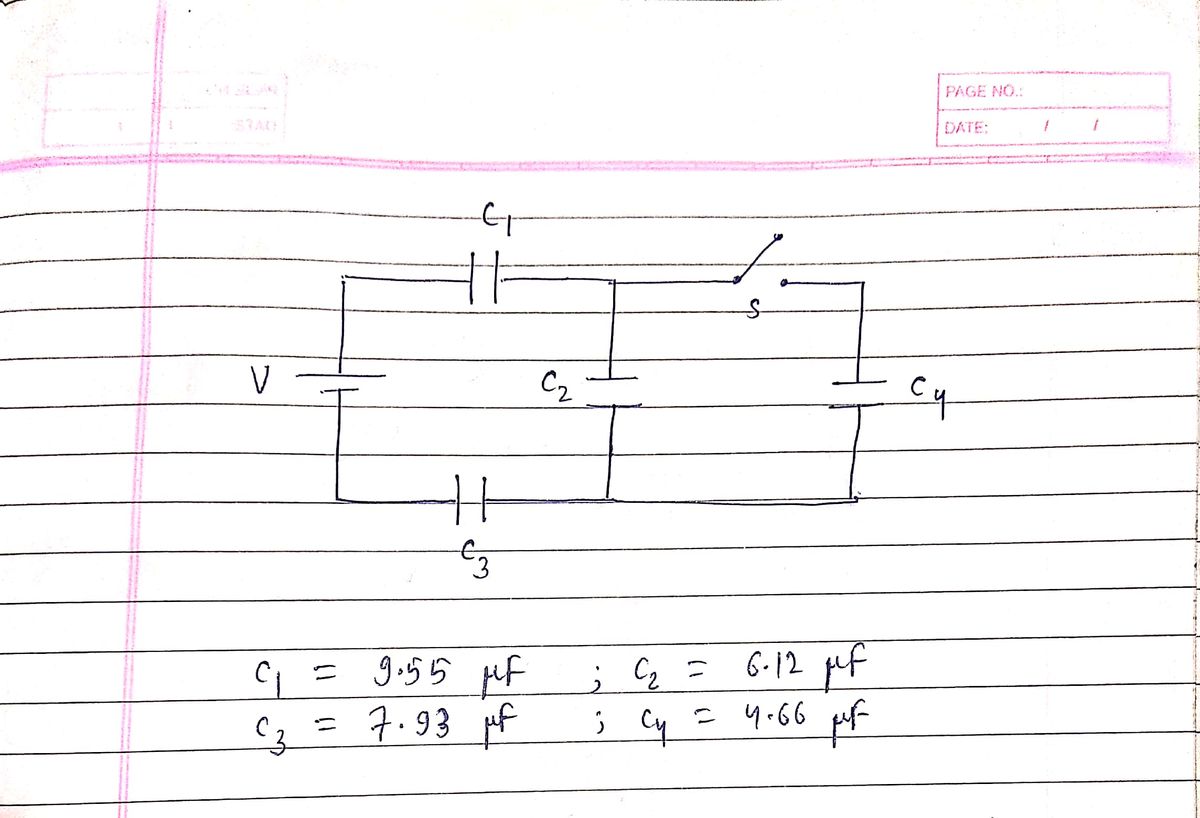The figure shows capacitor 1 (C1 = 9.55 µF), capacitor 2 (C2 = 6.12 µF), and capacitor 3 (C3 = 7.93 µF) connected to a 13.4 V battery. When switch S is closed so as to connect uncharged capacitor 4 (C4 = 4.66 µF), (a) how much charge passes through point P from the battery and (b) how much charge shows up on capacitor 4? S V (a) Number Units (b) Number i Units >
The figure shows capacitor 1 (C1 = 9.55 µF), capacitor 2 (C2 = 6.12 µF), and capacitor 3 (C3 = 7.93 µF) connected to a 13.4 V battery. When switch S is closed so as to connect uncharged capacitor 4 (C4 = 4.66 µF), (a) how much charge passes through point P from the battery and (b) how much charge shows up on capacitor 4? S V (a) Number Units (b) Number i Units >
Related questions
Question

Transcribed Image Text:The figure shows capacitor 1 (C1 = 9.55 µF), capacitor 2 (C2 = 6.12 µF), and capacitor 3 (C3 = 7.93 µF) connected to a 13.4 V battery.
When switch S is closed so as to connect uncharged capacitor 4 (C4 = 4.66 µF), (a) how much charge passes through point P from the
battery and (b) how much charge shows up on capacitor 4?
%3D
%3D
%3D
P
S
C3
(a)
umber
i
Units
(b) Number
i
Units
>
>
Expert Solution
Step 1

Trending now
This is a popular solution!
Step by step
Solved in 2 steps with 2 images
